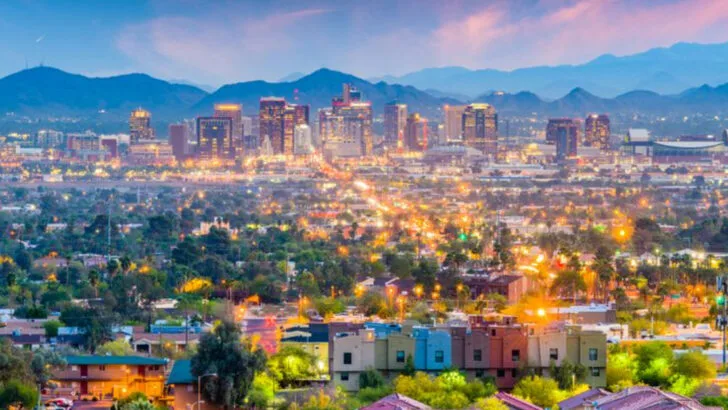Fifteen years ago, you could park downtown without praying to the meter gods. Now? That same street is lined with rooftop bars, yoga studios, and coffee shops selling lavender oat lattes for eight bucks. Cities age fast—and some reinvent themselves even faster. Blink, and the dive bar is now a boutique hotel. The gritty warehouse district? Packed with tech bros and overpriced tacos. These 10 U.S. cities didn’t just glow up—they flipped the script. What was once overlooked is now unrecognizable. Whether you’re nostalgic or just plain shocked, one thing’s clear: nothing stays the same for long.
Austin, TX
Austin has seen a profound shift from traditional lawns to native landscapes over the past decade and a half. Residents have embraced drought-tolerant plants like purple coneflower, Gulf muhly, and Turk’s cap, creating vibrant pollinator gardens. In older neighborhoods, these transformations have led to less watering and more biodiversity.
Once lawn-dominated, areas now thrive with varied plant species, inviting a host of butterflies and pollinators. This change reflects a city-wide movement toward sustainability and environmental mindfulness.
Such landscapes not only save water but also add a touch of colorful elegance to the urban setting.
Detroit, MI
In a city once dotted with vacant lots, Detroit’s landscape has dramatically transformed with urban farming. Community-led initiatives have turned these spaces into thriving gardens with greens, tomatoes, and sunflowers. Raised beds and hoop houses now stand as symbols of resilience and renewal.
Detroit’s embrace of urban agriculture reflects a grassroots approach to sustainability and self-sufficiency. These gardens not only provide fresh produce but also foster community engagement and pride.
From desolation to cultivation, Detroit’s urban farms represent hope and innovation amid change.
Seattle, WA
Seattle’s skyline, once dominated by concrete, now boasts countless rooftop gardens. New constructions across the city have embraced green roofs, filled with sedums, herbs, and compact shrubs. In areas like South Lake Union, these green spaces soften the urban landscape.
Rooftop gardens provide more than just visual relief; they contribute to sustainability by managing rainwater and reducing heat. These spaces are a testament to Seattle’s forward-thinking approach to urban development.
With greenery above street level, Seattle’s transformation is as much about the environment as it is about aesthetics.
Phoenix, AZ
To combat the escalating heat, Phoenix has strategically planted shade trees like palo verde, mesquite, and desert willow. These trees now line sidewalks and transit stops, offering much-needed shade and vibrant spring blooms.
By incorporating desert-adapted trees, Phoenix addresses not only the city’s temperature challenges but also enhances its visual appeal. The green canopy creates a welcoming environment for pedestrians and commuters alike.
This initiative highlights Phoenix’s commitment to integrating natural solutions into urban infrastructure, making the city more livable and attractive.
Brooklyn, NY
Brooklyn’s transformation is seen in its numerous pocket gardens, ingeniously squeezed between buildings and reclaimed curb spaces. These small gardens, filled with witch hazel, hostas, and climbing vines, bring nature into the urban environment.
What was once predominantly paved has become a tapestry of greenery, adding life and color to the streets. These gardens serve not only as aesthetic enhancements but as sanctuaries for urban dwellers.
Brooklyn’s commitment to green spaces reflects a broader trend of integrating nature into city living, creating a more harmonious urban experience.
Denver, CO
Denver’s landscape has shifted from bluegrass lawns to native grasses like buffalograss, blue grama, and rabbitbrush. These resilient grasses now grace both public and private spaces, swaying gently in the dry Colorado breeze.
This transformation not only conserves water but enhances the aesthetic of the city, embracing its natural climate. The shift represents a growing awareness of local ecology and sustainability.
By prioritizing native species, Denver has redefined its green spaces, making them both environmentally friendly and visually appealing.
Miami, FL
Frequent storms have reshaped Miami’s approach to gardening, leading homeowners to plant resilient coastal species like sea grape, saw palmetto, and firebush. These hardy plants now characterize the city’s lush landscapes.
Miami’s gardens are a reflection of adaptation to climate challenges, blending beauty with durability. The result is a cityscape that thrives amid adversity, showcasing nature’s resilience.
This shift in planting practices highlights Miami’s proactive stance on environmental adaptation, ensuring that its beauty endures through the storms.
Pittsburgh, PA
Pittsburgh has transformed its former industrial rail lines, such as the Three Rivers Heritage Trail, into vibrant corridors of wildflowers. Black-eyed Susans, milkweed, and goldenrod now line these trails, blending natural beauty with urban functionality.
These wildflower corridors are a testament to Pittsburgh’s innovative reuse of space, supporting both pollinators and pedestrians. The trails offer a scenic escape within the hustle of the city.
By incorporating wildflowers, Pittsburgh not only revives its industrial past but enhances its urban environment with color and life.
San Diego, CA
In San Diego, many front yards have swapped traditional turf for chaparral plants such as manzanita, sages, and buckwheat. These native plants, paired with decomposed granite paths, create a tidy yet wild aesthetic.
This widespread change reflects a trend towards sustainability and water conservation, embracing the natural beauty of Southern California’s environment. The new landscapes are both functional and appealing.
San Diego’s transformation of residential spaces demonstrates a commitment to eco-friendly living, making the city a model of modern, sustainable design.
Atlanta, GA
Atlanta’s urban renewal has included a concerted effort to replant native canopy species such as sweetgum, tulip poplar, and dogwood. These trees now grace neighborhoods like Grant Park, offering shade and seasonal color.
After decades of growth that removed many trees, Atlanta’s reforestation efforts reconnect the city with its wooded roots. The resurgence of greenery enhances the urban landscape and improves air quality.
Atlanta’s commitment to trees symbolizes a return to nature, creating a harmonious balance between development and the environment.

